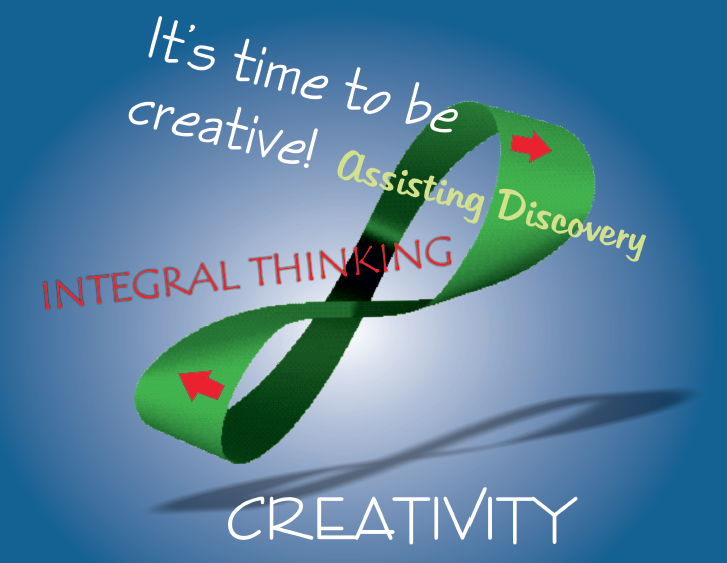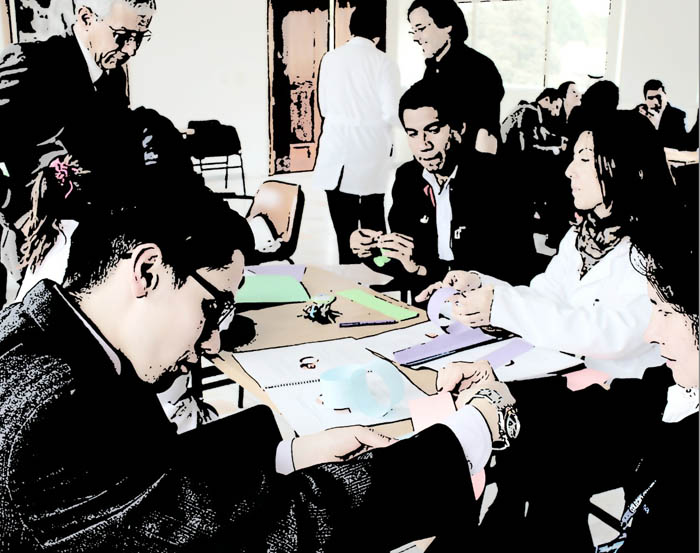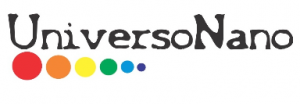
Integral thinking and nanoscience
To cite this article use: Rios, A., Murillo, F., González, E. Integral thinking and nanoscience. J. Nano Sc. Tech, 3(2015)77-79
Antonio Ríos
Francisco Murillo
Colegio Champagnat
e-mail: antoniorios@colegiochampagnat.edu.co
rector@colegiochampagnat.edu.co
Edgar González
Instituto Geofísico, Facultad de Ingeniería, Pontificia Universidad Javeriana.
Nanoscale Science and Technology Center “NanoCiTec”
Red nanoColombia
e-mail: egonzalez@nanocitec.org
In front of the big defiance that the society faces in the 21st century, specifically those resulting from environmental crisis, energy, health, and feeding among others; besides of the drastic changes in the professional and disciplinary work that the emerging technologies impose, it is necessary that the new generations be prepared to assume this challenge and these new ways to get and apply knowledge. It is mandatory for professionals of the 21st century, capacities and competences to take over with comprehensive thinking. The building and implementation processes came from the accelerated progress and possibilities that this new era of knowledge offers. It is necessary to create favorable spaces to help students to develop attitudes and sensibility of commitment to build social welfare. These attitudes are fed on the “passion” and the “pleasure” for knowing and doing, and they are cultivated during the formative process that is provided at school.
In this sense and looking for comprehensive thinking, it is essential to favor and strengthen the dialogue between the “different” areas of knowledge structured in different subjects that are part of the curriculum. It is possible to establish as point of departure the generation of spaces that allow the development of this dialogue, starting out with elements that are considered fundamental in the educational labor. One of these elements is the construction of the abstract and its relation with the concrete. In this way, in the numbers theory and geometry where the same abstract body can go from an analytic context to a geometric one and vice versa, a way of thinking is allowed that affects in a dramatic way the vision that is built about the world. It is known that the brain “thinks” making relationships and the different aspects of reality are affected by this way of thinking. This construction of the world is desired to be integral, due to the fact that it has components that are esthetic, ethic, formal, etc.
It is not difficult to find unifying elements that allow that desired dialogue between knowledge. The Mobius ban is a clear example. From music, literature, physics, math, arts, etc. A space of dialogue is opened and it allows us to build an integral vision of space, wonders and amazing properties.
The lessons offered by nature, shown in the amazing properties related to the shape and special dispositions; the way in which atoms interact among them to obtain a distribution in the space, to give rise to the behavior of the matter; there is no doubt that we have an opened book from which we can “learn” if first we “learn” to read it.
During the year 2013, an observational workshop was carried out with preschool children from Champagnat school of Bogotá with materials that show original properties that come from the nanoscale. The results were surprising. The interest shown by children and the quality of their answers to different questions that were shown to them, still show the presence of a creative attitude, fed on the astonishment and the passion for the world that is around them [1]. From this valuable experience, Champagnat school has guided efforts to “promote the building and development of comprehensive thinking spaces as a base to encourage creativity and the strengthening of logic-formal thinking in the formative process”.
During the year 2014, two workshops were developed with all the teachers from the school with the intention of giving an institutional vision that reflects over a unifying curriculum that promotes creative thinking. In the first workshop named “One and two faces’ universes” [2] worked with one was of the most motivating approximations to comprehensive and creative thinking: the Mobius band. Music, physics, chemistry, math, arts, literature, biology, among others, are transversely integrated around the amazing properties of spaces that in these universes force to leave the comfort of intuition and go beyond of what the sensorial perception gives us (“absent worlds”). This is one of the key elements for comprehensive thinking. Some teachers of the different grades replicated the workshop with their students, what gave them interesting results. One student with learning difficulties, showed an exceptional ability in the creation of universes of one and two faces.
The second workshop was about the relationship between simplicity and complexity. The supporting point for this approximation was chosen from the lessons we receive from nature, particularly in the “invisible” worlds from the nanoscale, where wonderful fitted architectures and processes of an incredible creativity are built. Starting with the way that atoms are organized according to the environment conditions, related and symmetry aspects are identified as determiners by the way that atoms are organized in space. Architecture and positional relations are strategic. This allows appreciating the importance of geometry. It is necessary to go beyond the plain thinking and take it to the third dimension –and further -. This aspect was studied from an exercise that showed how our attitude in front of the majority of problematical situations is basically “plain”.
Teachers were consulted about the possibility of thinking in a comprehensive curriculum taking into account these experiences, some essential elements were set out to be taken into account, in order to carry out a purpose like this:
i) a necessity to foster the creativity and to maintain the pleasure and passion for knowledge.
ii) The invisible universes of nanoscale are important to build sceneries in order to facilitate a unifying point with the biological principles of life, arts, literature and natural sciences.
iii) The relationship between the simple and the complex has an important role in the construction of formal thinking with transversal creative thinking.
References
[1] Rios, A., Murillo, F., Salinas, S. And González, E. Rev. Nano. Cienc. Tec. 2, 77 (2014).
[2] González, E. Universos de una y dos caras, Creativity Lab, UniversoNano, 2014.
Acknowledgements
Thanks to the teacher Sandra Torres for the translation of the document.
E-mail: sandratorres@colegiochampagnat.edu.co
You may also like

The second quantum revolution..
The second quantum revolution will have a profound impact on 21st century society
read more

















This post have resolved our problem,thanks very much and hope you writting more good articles.
cheap ray ban sunglasses resin http://www.funt-tea.ru/resin/